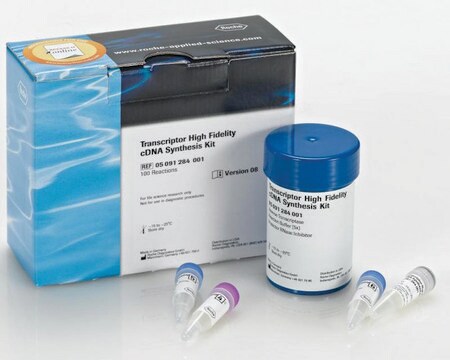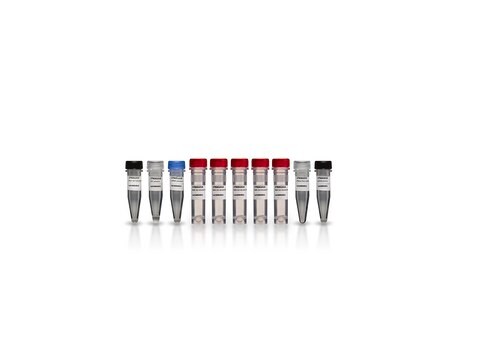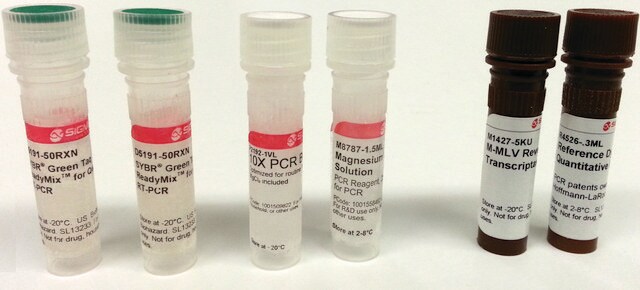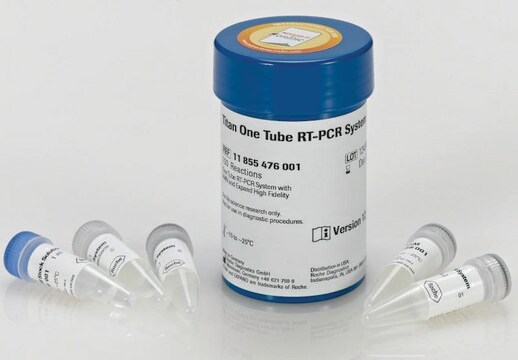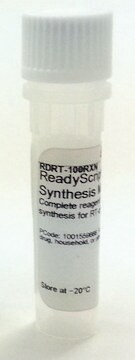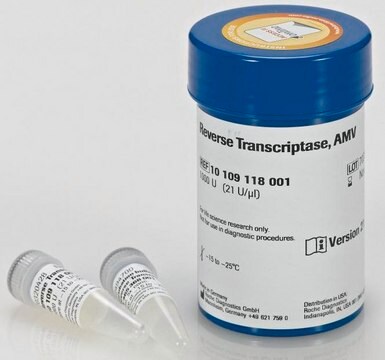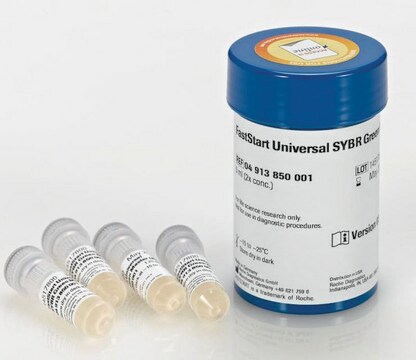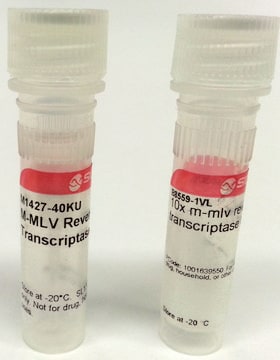11483188001
Roche
First Strand cDNA Synthesis Kit for RT-PCR (AMV)
sufficient for 30 reactions (including 5 control reactions), kit of 1 (10 components), suitable for RT-PCR, hotstart: no, dNTPs included
Synonym(s):
RT-PCR, cDNA sysnthesis
About This Item
Recommended Products
usage
sufficient for 30 reactions (including 5 control reactions)
Quality Level
specific activity
>50 units/μg protein
feature
dNTPs included
hotstart: no
packaging
kit of 1 (10 components)
manufacturer/tradename
Roche
parameter
42 °C optimum reaction temp.
technique(s)
RT-PCR: suitable
input
purified RNA
storage temp.
−20°C
General description
AMV RT synthesizes the new cDNA strand at site(s) determined by the type of the primer used:
- at the 3′-end of the poly(A) mRNA when Oligo-p(dT)15is used as a primer,
- at nonspecific points along the mRNA template when using the random primer p(dN)6, or
- at a site determined by a sequence-specific primer.
Specificity
Reverse Transcriptase AMV
Application
- Detection of the presence or absence of RNA viruses or other RNA-containing microorganisms (in combination with PCR)
- Quantification of mRNA for monitoring differential expression of a specific mRNA
- First step in the "differential display of mRNA"
- Generation of cDNA libraries with large and full-length inserts
- Reverse transcription-quantitative polymerase chain reaction (RT-qPCR) for reverse transcription of RNA into complementary DNA.
Features and Benefits
- Transcribes total RNA, mRNA and viral RNA along with difficult-to-transcribe secondary RNA structures
- Obtain cDNA transcripts up to 12 kb
- Higher thermostability (up to 50°C) and specificity than M-MuLV Reverse Transcriptase
- Purification of the resulting cDNA before PCR reaction is not necessary
It can be used with either sequence-specific primers, poly(dT)15 primers, or random primers, p(dN)6
Packaging
Quality
Unit Definition
Other Notes
Kit Components Only
- Reverse Transcriptase AMV
- PCR Nucleotide Mix, pH 8.5 10 mM each
- Reaction Buffer
- MgCl2 Stock Solution 25 mM
- Gelatin 0.05% (w/v)
- Oligo-p(dT)15 , 0.02 A260 units/μl 0.8 μg/μl
- Random Primer p(dN)6 , 0.04 A260 units/μl 1.6 μg/μl
- RNase Inhibitor 50 U/μl
- Control Neo pa RNA (1.0 kb in length with additional 19-base 3′-poly(A) tail) 0.2 μg/μl
- Water, PCR Grade
Storage Class Code
12 - Non Combustible Liquids
WGK
WGK 1
Flash Point(F)
does not flash
Flash Point(C)
does not flash
Choose from one of the most recent versions:
Already Own This Product?
Find documentation for the products that you have recently purchased in the Document Library.
Customers Also Viewed
Biosynthetic Genes lovE and lovF
Protocols
First Strand cDNA Synthesis Kit for RT-PCR (AMV) Protocol
Related Content
RT-qPCR, or quantitative reverse transcription PCR, combines the effects of reverse transcription and quantitative PCR or real-time PCR to amplify and detect specific targets. RT-qPCR has a variety of applications including quantifying gene expression levels, validating RNA interference (RNAi), and detecting pathogens such as viruses.
Our team of scientists has experience in all areas of research including Life Science, Material Science, Chemical Synthesis, Chromatography, Analytical and many others.
Contact Technical Service
